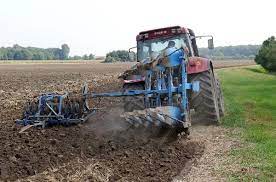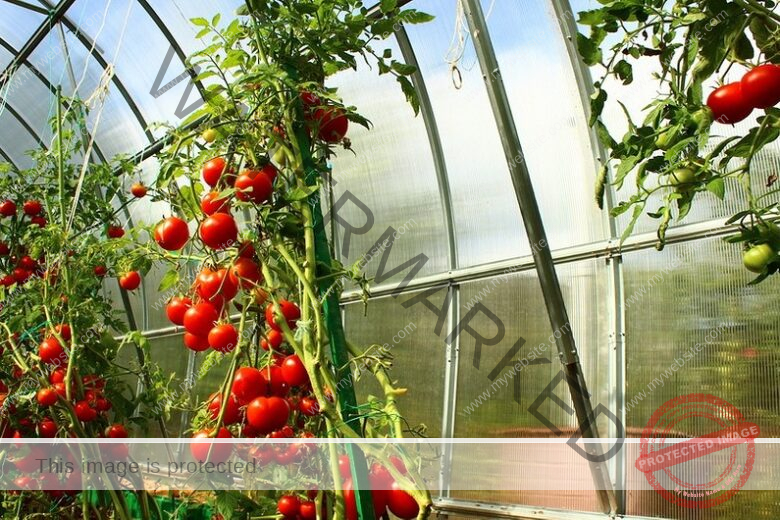Soil preparation is an important step in plant cultivation in South Africa. It is necessary to prepare the soil before planting to ensure optimal growth and yield. This guide will provide an overview of what factors should be taken into consideration when preparing the soil for planting, as well as general tips and best practices for successful soil preparation.
In South Africa, soil preparation involves cleaning and clearing up the area, adding organic matter, such as compost to the soil to increase its fertility, as well as tilling the soil to loosen it and improve aeration, soil testing, fertilizer application, and so on.
By following this guide, you will be better equipped to ensure a healthy and productive yield of plants in your garden or farm.
[Beginners Guide] Soil Preparation for Plant Cultivation in South Africa
Farming is an important activity in South Africa, so if you decide to venture into crop farming, it is important that you get your soil preparation right for optimal plant growth and yield, so it is important to take the time to do it right.
To ensure that the soil is prepared properly for planting in South Africa, here is a beginner’s guide to soil preparation for plant cultivation in South Africa.
Step 1. Cleaning And Clearing The Area
Cleaning and clearing land is a vital step in the process of soil preparation. This process involves removing large rocks, roots, vegetation, and any other debris that may be present on the site. It is important to remove any obstacles that may inhibit the growth of crops or impede the progress of the soil preparation process.
Remove Large Rocks and Debris
The first step in cleaning and clearing land is to remove large rocks and debris. This can be done by hand or with heavy machinery such as bulldozers or backhoes. If large machinery is used, it is important to be mindful of the environment and take precautionary steps to minimize any damage that may be caused to the land.
Remove Any Roots And Vegetation
The second step is to remove any roots and vegetation. This can be done by hand or with tools such as shovels, pickaxes, and hoes. It is important to remove all roots and vegetation to ensure that the soil is free of any unwanted materials that may interfere with the growth of crops.
Step 2. Test the Soil
It is important to test the soil before planting to determine the pH level and Nutrient content. This helps to ensure that the soil is suitable for the type of plants that you are growing.
To test the soil on the land, you should collect soil samples and take them to a professional lab where the ph and nutrient levels of the soil can be tested. Also, you will be given the best soil nutrient recommendation that you can apply on the farmland to improve soil nutrients if need be.
To carry out soil testing yourself, you should follow the steps below.
Collect Soil Sample
Collect soil samples from different layers (topsoil, subsoil, and bedrock) from different parts of the field.
Dry and Prepare Soil Sample
Spread the soil samples on a tray and allow them to dry for at least four days. After drying, remove any large stones and other debris.
Grind and Sieve Soil Sample
Grind the dried soil samples to a fine powder using a mortar and pestle. Then, sieve the soil powder using a sieve with a mesh size of 2–3 mm.
Perform Chemical Tests
Perform various chemical tests on the soil sample to determine its pH, nutrient levels, and other properties.
Analyze Results
Analyze the results of the chemical tests to assess the soil’s fertility and to determine if additional soil amendments are necessary. The compatible ph level is within the range of 6.5 to 7.5.
Make Recommendations
Make recommendations for soil amendments, such as fertilizers and/or lime, based on the results of the soil tests.
Step 3. Add Organic Matter
Adding organic matter to the soil helps to improve soil fertility by providing essential nutrients for plant growth. Compost, manure, and other organic materials are all suitable for adding to the soil.
Step 1. Identify Deficient Area
Identify the areas where organic matter needs to be added.
Step 2. Analyze SOil
Analyze the type of soil present on the land to determine if it is suitable for the addition of organic matter.
Step 3. Select Suitable Organic Matter
Decide on the type of organic matter to be added. Compost, manure, green manures, and other organic materials can be used.
Step 4. Apply the Organic Matter
Spread the organic matter evenly across the land and then incorporate it into the soil using a rake or hoe.
Step 5. Water the Land
Water the land to ensure that the organic matter is mixed evenly throughout the soil.
Step 6. Mix the Soil
Allow the organic matter to decompose and mix with the soil. This will help improve the soil structure and fertility.
Step 7. Test the Soil
Test the soil to ensure that the organic matter has been added successfully.
Step 4. Till the Soil
Tilling the soil helps to break up any clumps and makes it easier for the roots of plants to penetrate the soil. It also helps to improve drainage and aeration, which are essential for proper plant growth.
Firstly, you need to break up the soil with a spade or shovel. This will loosen the soil and make it easier to till.
After that, you can begin to till the soil. This can be done manually or mechanically. For manual tilling, you can make use of simple farm tools such as spades, hoes, cultivators, shovels, garden Rakes, and forks.
For mechanical tilling, you will need tractors, caterpillars, rototillers, etc.
Till the soil to your desired depth and should be done in a straight line and let the tines turn the soil. Once you complete a row, turn around and repeat the process until the entire area is tilled.
Step 5. Fertilize the Soil
If the soil is lacking in essential nutrients, it is important to fertilize the soil before general-purpose fertilizer that is suitable for the type of plants that you are growing.
Step 1: Test the Soil
Before fertilizing, it is important to understand the soil composition and fertility levels. This can be done by testing the soil with a soil test kit or sending the soil to a local lab.
Step 2: Select the Fertilizer
Once the soil composition is known, select a fertilizer that is tailored to meet the needs of the plants that will be grown.
Step 3: Apply the Fertilizer
Spread the fertilizer evenly over the soil and use a rake to incorporate it into the top few inches of soil.
Step 4: Water the Soil
Water the soil thoroughly to activate the fertilizer and aid in absorption.
Step 5: Monitor the Soil
Monitor the soil over time to ensure that the fertility levels remain balanced and adequate for the plants.
Step 6. Level the Soil
The essence of soil leveling is to even and free the soil of any depressions or bumps. This can be done with a rake or a laser leveler. The goal is to create a flat surface that will allow for even soil preparation and planting.
Step 7. Water the Soil
It is important to water the soil before planting to ensure that it is moist and has enough available water for the plants.
When watering the soil, it should be done evenly using a hose or watering can. Allow the water to penetrate the soil to a depth of 3 to 6 inches. Monitor the soil moisture to ensure it is evenly moist throughout. If the soil is too dry, add more water.
Step 8. Crop Planting
After the first eight steps have been completed, you can go ahead to plant your crop. Make sure you adhere to the planting technique especially the right amount of seeds to be planted in each planting hole.
Also, continue to care for the plant by continuous watering, weeding, and fertilizer/manure application if necessary.
Soil Media Mixture Ratio
Soil media mixture ratio is a combination of different types of soil that are mixed in a specific ratio to create the ideal environment for growing plants. This ratio can vary depending on the type of plant, location, and other factors.
In general, the soil mixture should have a balance of nutrient-rich and nutrient-poor soil, as well as a balance of texture, drainage, and fertility. The mixture should also contain adequate amounts of organic matter, such as compost, to help retain moisture. When choosing a soil media mixture, it is important to select one that is tailored specifically to the type of plant being grown.
Different plants have different nutritional requirements, and the soil mixture should be able to provide those requirements. Additionally, the soil should be tested for pH and nutrient levels to ensure that it is appropriate for the plant being grown.
Soil Media Preparation
Here are the 10 steps you can follow to prepare your soil media.
Step 1: Select A Type Of Soil For The Media
Depending on the type of plants or experiment being conducted, the type of soil should be chosen accordingly. Examples of soil media are sandy, loamy, clay, peat, compost, vermiculite, perlite, coco coir, Rockwool, and sphagnum moss.
Step 2: Collect the Soil
Collect the soil from a suitable source. Make sure to collect a sample that is free from any contaminants.
Step 3: Sterilize the Soil
Sterilize the soil by heating it in an oven at 160 degrees Celsius for 30 minutes.
Step 4: Grind the Soil
Grind the soil using a blender or Food Processor.
Step 5: Filter the Soil
Filter the soil through a sieve to remove any large particles.
Step 6: Add Fertilizers and other Additives
Add fertilizers and other additives such as gypsum or limestone to the soil media to provide the required nutrients for the plants.
Step 7: Mix The Soil Media
Mix the soil media thoroughly with a garden hoe or other suitable tool.
Step 8: Fill The Container
Fill the container with the soil media and plant the desired seeds or plants.
Step 9: Water The Soil Media
Water the soil media regularly to maintain the moisture level.
Step 10: Monitor The Soil Media
Monitor the soil media regularly to check for any nutrient deficiencies or plant health issues.
Cabbage Farming Fertilizer
Cabbage farming requires the use of fertilizer to ensure a successful harvest. Nitrogen, phosphorus, and potassium are the three primary nutrients needed for optimal cabbage growth and development.
Nitrogen helps with leaf growth and color, phosphorus helps with root development and flowering, and potassium helps with disease resistance. Proper fertilizer application is essential to ensure that cabbage plants get the right amount of nutrients.
Organic Fertilizer
Organic fertilizers such as compost or manure are the best choice for cabbage farming. Both are rich in nitrogen, phosphorus, and potassium and can be applied to the soil either directly or as a top dressing.
Compost
Compost can be added to the soil before planting or applied to the soil during the growing season. Manure should be aged before application to ensure it has broken down enough to release its nutrients into the soil.
Inorganic Fertilizer
Inorganic fertilizers, such as chemical fertilizers, can also be used for cabbage farming. Chemical fertilizers should be applied at the beginning of the growing season, as well as during the growing season as needed.
It is important to follow the label instructions carefully when using chemical fertilizers to ensure the correct amounts of nutrients are applied.
It is important to note that proper fertilizer application is essential for a successful cabbage harvest. Organic fertilizers are the best choice, but inorganic fertilizers can be used if necessary.
Soil Media Examples
Here are some examples of Soil Media
Sand
Sand is composed of small particles of weathered rock. It is commonly used in soil mixes for container gardening, especially for succulents and cacti.
Peat Moss
Peat moss is a partially decomposed organic material composed of sphagnum moss. It helps to retain water and nutrients in the soil, making it a popular choice for container gardening.
Compost
Compost is organic material that has been broken down by microorganisms. It is rich in nutrients and can help to improve the structure and fertility of the soil.
Vermiculite
Vermiculite is a mineral that is made up of small, lightweight particles. It helps to aerate the soil and retain moisture, making it a great choice for container gardens.
Perlite
Perlite is a volcanic glass that is made up of small, lightweight particles. It helps to improve drainage and aeration in the soil, making it a popular choice for container gardening.
Coconut Coir
Coconut coir is a fibrous material made from the husks of coconuts. It is a great soil media choice for hydroponics since it is lightweight and highly absorbent. Plus, it is rich in beneficial bacteria which can help to improve the health of plants.
What Is Soil Media
Soil media is a type of growing medium used in horticulture and hydroponics for growing plants. This type of medium provides a physical support structure for roots and allows for the exchange of air, water, and nutrients between the soil and the plant.
Soil media can be made up of a variety of materials, including sand, clay, peat moss, and vermiculite, as well as other organic matter. Each type of soil media has its advantages and disadvantages, and choosing the right one for a particular crop can be important for optimal growth.
Importance Of Soil Media
Here are some vital importance of soil media.
#1. Soil Media Helps In The Growth Of Healthy And Strong Plants
Soil media is essential in providing the right balance of nutrients and oxygen to plants, enabling them to grow healthy and strong.
#2. Soil Media Helps In Filtering Pollutants
Soil media can filter pollutants and toxins from the environment, providing a clean and safe environment for plants and other living organisms.
#3. Soil Media Helps In The Absorption Of Water
Soil media helps plants to absorb water and other essential nutrients from the environment, enabling them to remain healthy and hydrated.
#4. Soil Media Helps In The Regulation Of Temperature
Soil media helps in maintaining the temperature of the environment, regulating the temperature to provide a suitable environment for the growth of plants.
#5. Soil Media Helps In The Storage Of Carbon
Soil media helps in the storage of carbon, which helps in reducing the amount of carbon dioxide in the atmosphere, aiding in the reduction of global warming.
Sandy Soil in Agriculture
Sandy soil is a type of soil that is made up of a large proportion of sand particles. It is light in color, has a low nutrient content, and is low in organic matter and water-holding capacity.
Sandy soil is often used for growing crops in arid and semi-arid climates because it is better suited for water infiltration and drainage. Sandy soils can be improved by adding organic materials such as compost, manure, and green manure, which will increase their water-holding capacity and nutrient content.
More so, it is possible to reduce erosion and improve the soil structure by regularly tilling and incorporating cover crops.
What’s The Perfect Soil
The perfect soil is well-drained, nutrient-rich, and has a good mix of sand, silt, and clay. It should also have a pH level between 6.5 and 7.0. Adding organic matter such as compost, manure, and mulch can help improve the soil structure and provide essential nutrients.
Conclusion
We have successfully compiled all the steps involved in soil preparation for plant cultivation in South Africa. If these steps are followed strictly, they will help to ensure that the soil is prepared properly and it will guarantee you a good yield.




